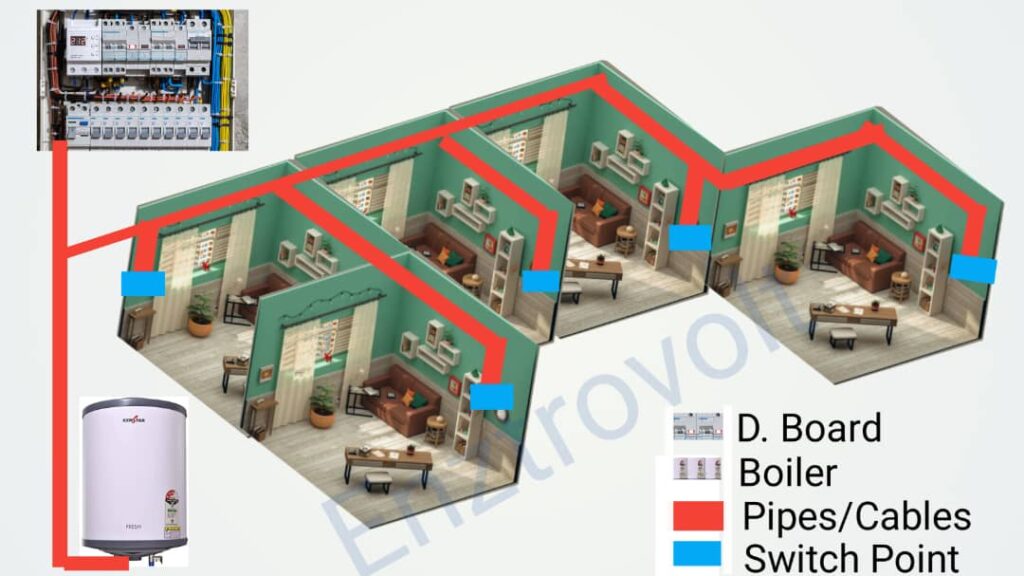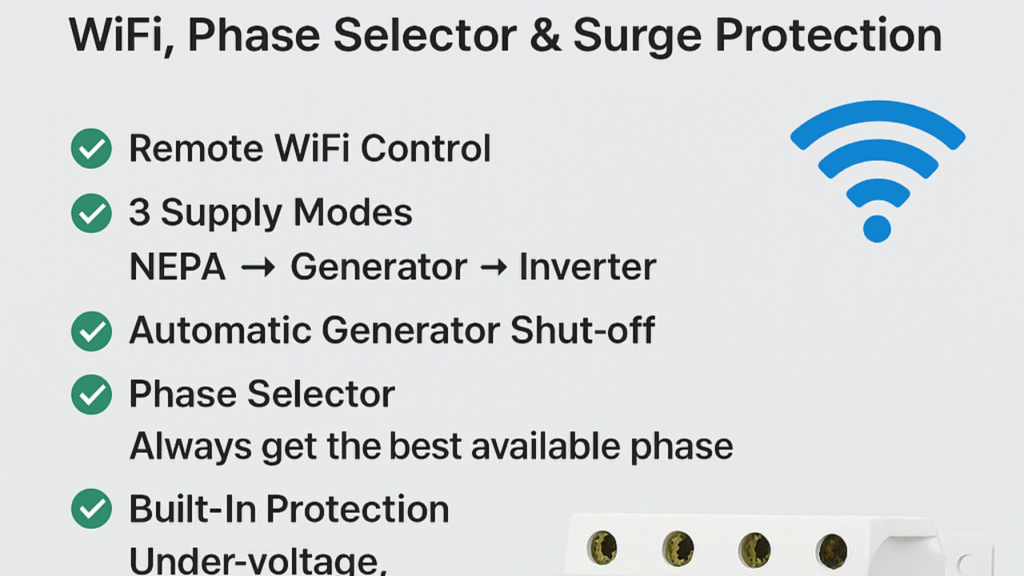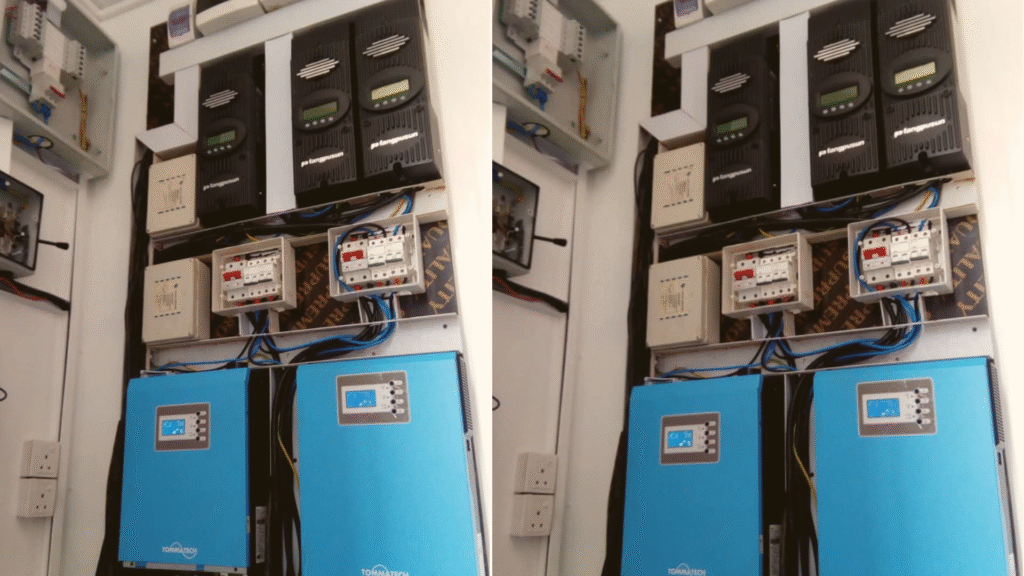As an expert in building construction/electrical field, I often notice that when building a new home, most people dream of creating a comfortable and luxurious space that meets all the needs of their family and their guests. For homeowners who invest in multi-room residences—let’s say a four or five-bedroom duplex complete with a guest/visitor’s room and a kitchen—comfort often extends to having reliable access to hot water in every corner of the house.
Traditionally, the solution has always been very straightforward: install individual water heaters in every bathroom, including the kitchen. At first glance, this approach may seem practical. After all, each room gets its own dedicated supply of hot water. But when we take a closer look at the cost, power consumption, and long-term efficiency, this arrangement begins to show significant drawbacks.
What if there were a smarter, more cost-effective way to enjoy hot water in every part of your home without having to install multiple units? This is the question we at Enztrovolt Engineering bring to you as you come across these articles. The good news is that such a solution exists—and it involves using just one centralized indoor water heater system to serve the entire house. Permit me to break this down.
The Conventional Approach: Usually One Heater per Room
Imagine your newly built four-bedroom duplex. Each bedroom is designed with its own bathroom, and in addition to that, there’s a guest/visitor’s room and a kitchen. To meet modern lifestyle expectations, you often feel the need to install water heaters in all of these spaces.
That means:
- 4 heaters for the bedrooms
- 1 heater for the guest/visitor’s room
- 1 heater for the kitchen
Altogether, that totals six individual water heaters.
The Financial Burden
Each water heater costs money to purchase, install, and maintain. Multiplying that by six quickly turns into a hefty investment during the construction and finishing stages of the home. And let’s not forget the costs associated with wiring, plumbing adjustments, and regular servicing.
The Energy Problem
Beyond the upfront costs, there’s another hidden expense: energy consumption. A typical small-capacity water heater—say, a 15-liter model—comes with a power rating of about 1500 watts. Now, multiply this by six units. Even if not all heaters run at the same time, the overall energy demand placed on your household’s electrical system is significant.
This means higher utility bills, unnecessary strain on your wiring, and constant worry about power usage. Over time, what seemed like a “comfort investment” turns into a financial drain. This is one of the reasons you hear most low-income earners saying they don’t want a water heater in their house.
The Smarter Alternative: One Central Water Heater for the Whole House
Instead of installing multiple heaters, what if you could achieve the same comfort and functionality with just one unit? That’s exactly what a centralized water heating system offers.
Here’s how it works:
- You install a single water heater with a larger storage capacity—typically between 50 to 80 liters.
- The system is strategically positioned indoors to ensure efficient distribution.
- From this central point, hot water is piped to every bathroom and the kitchen.
- Each room has its own switch point, allowing individual control of the same heater from multiple locations.
The result? All the convenience of hot water on demand, without the need for multiple machines.
Why Centralized Water Heating Makes Sense
1. Lower Installation Costs
Rather than spending money on six separate water heater units, you purchase just one larger, energy-efficient model. This immediately slashes your upfront expenses. Additionally, plumbing and electrical installations are simplified, since everything connects back to one source.
2. Reduced Power Consumption
A 50–80 liter water heater with a power rating of not more than 2000 watts is more than capable of supplying hot water for the entire household. Compare that to the cumulative 9000 watts you’d get from running six smaller heaters, and the difference is clear.
Over time, the reduction in energy consumption translates to significant savings on electricity bills.
3. Simplified Maintenance
Maintaining one unit is far easier and cheaper than keeping six units in good condition. With fewer parts and fewer points of failure, the centralized system is not only more reliable but also less stressful for the homeowner.
4. Cleaner Aesthetics
Bathrooms and kitchens look cleaner and more modern when not cluttered with multiple heater units mounted on the walls. A centralized system keeps the setup minimal, giving your interiors a sleek, professional finish.
5. Long-Term Durability
Larger, centralized water heaters are designed for heavy-duty use. They tend to be more robust, last longer, and often come with stronger warranties compared to smaller individual heaters.
Practical Evidence of Effectiveness
This concept is not just theoretical—it has been tested and proven in real residential setups. Homeowners who have made the switch to centralized heating report consistent access to hot water across multiple rooms without interruptions.
With proper installation, one central heater efficiently serves bathrooms, kitchens, and visitor rooms. Enztrovolt Engineering, during the strategic installation design, provides multiple switch points, which means every occupant has convenient control without depending on one main switch.
Overcoming Common Concerns
“What if everyone uses hot water at the same time?”
This is where the larger storage capacity comes in. A 50–80 liter tank ensures that there’s enough hot water for multiple uses. With proper planning, the system can handle simultaneous demand without running out too quickly.
“Won’t it take longer for the water to travel to different rooms?”
Modern plumbing design addresses this issue by ensuring efficient pipe layouts that minimize delays. Additionally, because the heater remains powered on when needed, the water stays consistently hot.
“What about the cost of the larger heater?”
While a 50–80 liter unit costs more than a single 15-liter heater, the savings become obvious when you compare it against the cost of buying six separate units. Over time, the reduced energy bills and maintenance costs further highlight its financial advantage.
Centralized Heating vs. Individual Heating: A Quick Comparison
| Factor | Multiple Heaters (6 units) | One Central Heater |
|---|---|---|
| Initial Cost | High (purchase & installation of 6 units) | Lower overall (only 1 unit + plumbing) |
| Power Rating | 6 × 1500W = 9000W | 1 × 2000W or less than |
| Maintenance | Multiple servicing points | Single servicing point |
| Aesthetics | Units visible in every room | Cleaner, minimal look |
| Durability | Smaller units, shorter lifespan | Larger unit, longer lifespan |
| Convenience | Each room has separate heater | One system, multiple control points |
The centralized option clearly stands out as the more efficient choice.
Who Should Consider a Centralized Water Heater?
- Homeowners with multi-room residences who want to reduce costs without sacrificing comfort.
- Families that frequently host guests and need reliable hot water supply in multiple rooms.
- Property developers aiming to add value to their projects while keeping costs manageable.
- Environmentally conscious households looking to cut down on unnecessary energy waste.
Final Thoughts
Hot water is not supposed to be a luxury—it’s an essential feature in our daily living. However, the way you choose to implement it in your home can make a world of difference in both your finances and your daily convenience.
Installing multiple water heaters may seem like the standard approach, but it’s costly, energy-intensive, and unnecessarily complicated. By switching to a centralized water heating system, you gain the comfort of hot water in every bathroom and kitchen, while enjoying lower installation costs, reduced energy consumption, easier maintenance, and a cleaner home design.
If you’re planning a new build—or even considering upgrades to your existing home— contact Enztrovolt Engineering or visit our services to provide smarter solutions that could be the key to a more efficient and comfortable household, and with the right design and installation, one water heater is truly all you need.





